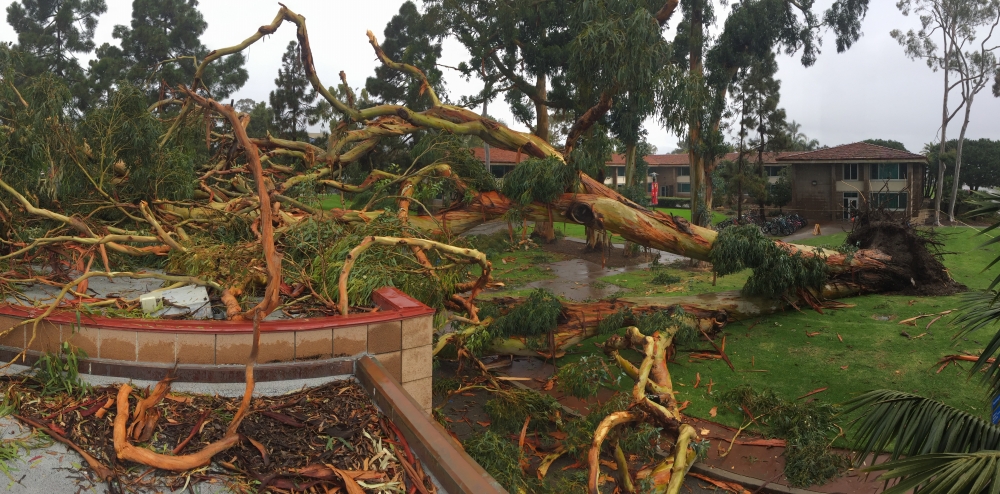The Changing Campus Forest
UC Santa Barbara is home to a diverse population of trees that thrive in Southern California’s Mediterranean climate — a continuing botanical effort that began with former chancellor Vernon Cheadle. Unfortunately, a number of trees, particularly the blue gum eucalyptus, are suffering from infirmity and old age.
Planted as wind breaks roughly a century ago, when the campus was little more than farmland, many of the blue gums are past their prime and, in fact, represent a danger to the campus that grew up around them.
“There is no question that the blue gums pose a hazard on campus due to their age and the erosion of their root structure,” said Bruce Tiffney, professor of plant paleobiology and interim dean of the College of Creative Studies.
In fact, a representative from Associated Students leadership, On-Campus Senator Austin Foreman, along with Marc Vukcevich the student representative on the campus’s Design and Review Committee, recently shared their concerns with Garry Mac Pherson, vice chancellor for administrative services. Foreman and Vukcevich support the University in creating a timeline for removing the trees in question, beginning with those nearest population centers, where they pose the greatest safety risk.
Blue gums are also highly flammable, pointed out Joel Michaelsen, a professor emeritus in the geography department and an expert in fire ecology and climatology. “If a fire started on campus, they could be a hazard,” he said. “I think the risk from them shedding limbs or getting blown over is likely to be quite a bit larger, though.”
Indeed, more than a few of the blue gums have fallen due to strong winds, according to Jon Cook, the associate director of grounds and custodial services, who is himself a certified arborist. In each case the downed tree bore signs of significant decay. “When the trees start to fall over, that’s a signal to us that we need to do something,” he said.
That “something” is an effort to replace the unhealthy trees with a diverse assortment of new species. East African yellowwoods, Mongolian oaks and "Princeton Sentry" ginkos, among many other trees, will soon grace campus. The planting locations and varieties of new trees were selected by the university’s landscape committee, a group of faculty, staff and other members of the campus community who guide the school’s botanical decisions.
“Many of these trees are excellent and will fill in and add both aesthetic color as well as teaching opportunities,” said Tiffney, who serves on the committee.
That said, eucalyptus will continue to have a presence on campus. Some of the blue gums will be replaced with other species, such as lemon gums. “We will be planting quite a few of those in the medians along Mesa road,” said Cook. Look for other eucalyptus to appear near the first-year residence halls on the east side of the lagoon. They’re situated right in the middle of the campus’ Australian flora zone.
The university has carried out extensive reviews of the eucalyptus and the wildlife that live in them. Cook led an arborist survey to detail the health of the trees, and Principal Planner Shari Hammond has coordinated wildlife surveys.
Tall trees, like the elderly blue gums, provide excellent habitat for raptors, so the university conducted a survey specifically to assess the impact this project will have on the campus’s resident birds of prey. The findings were incorporated into decisions regarding the varieties, number and location of new trees. Hammond has also overseen a more general bird survey, which includes an on-site review of wildlife. This will be double checked immediately before each tree is taken down.
“These trees absolutely are part of the history of the campus,” said Tiffney. “So, yes, we are losing something. On the other hand, I think it would be irresponsible not to take action and make sure that these particular trees do not pose a danger to the campus community.”
Facilities will begin the project’s first phase in the coming months, while the timing of future phases is still being determined.





